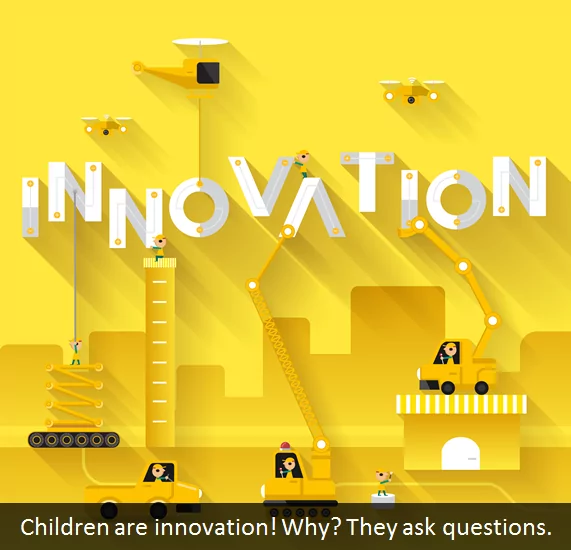Learning Innovation Part I: Setting the Stage

As learning professionals, you are already all too familiar with the pressure you feel to be increasingly innovative in your work. But have you ever stepped back to think about what innovation really is, and what you can do to boost your own innovation? Many people consider innovation to be synonymous with creativity. While being highly creative can help with some aspects of innovation, there’s much more to it than that. In this article I set the stage about innovation as a lead-in for helping you become a more innovative learning professional.
 A Chicago-based author and innovative expert I work with, Stephen Di Biase, has written extensively about innovation, from how to apply it in businesses to raising innovative children to unlocking your own innovative self. He offers up a simple and elegant definition for innovation that I paraphrase here: A human response to change in order to create wealth in the present. Think about how clearly this definition applies to your work as learning professionals. There is some kind of change in the business to which you must respond in order for the company to continue its critical mission of generating wealth in the present.
A Chicago-based author and innovative expert I work with, Stephen Di Biase, has written extensively about innovation, from how to apply it in businesses to raising innovative children to unlocking your own innovative self. He offers up a simple and elegant definition for innovation that I paraphrase here: A human response to change in order to create wealth in the present. Think about how clearly this definition applies to your work as learning professionals. There is some kind of change in the business to which you must respond in order for the company to continue its critical mission of generating wealth in the present.
Dr. Di Biase often begins his writings about innovation by pointing out that everyone is naturally innovative from birth. In fact, he notes how children around the age of five are probably the most innovative beings on the planet. Why? The reason is simple: They ask TONS of questions and don’t ever pretend to have the answers. They are incredibly curious. That’s a key piece of innovation, and one that tends to get educated right out of us as we go through school, where answers are nearly always more valued than questions. The fact of the matter remains, however, that being an innovative person is much more about asking great questions than trying to provide answers, although those have their place as well. As Claude Levi-Strauss famously put it, “The wise man doesn’t give the right answers, he poses the right questions.” The ancient philosopher Socrates was famous for generating useful knowledge simply by asking the right questions.
Learning how to be an effective inquirer who can leverage the art of asking great questions is an essential part of the innovation equation. It begins with clearly understanding the consequences that can result if you fail to ask the right questions at the right time. Dr. Di Biase illustrates this with several tragedies that could have been avoidable if only people were willing to speak up and ask the right questions.
Take the Titanic as a prim example. There were several people involved in the building of the Titanic who had reservations about both the design and the steel used in its construction. Everyone knows that the Titanic struck an iceberg, but that is really just one contributing factor to why it sank. Technically, it should have been able to survive that impact for some length of time without sinking in just three hours. As it turns out, the rivets used to hold the ship’s hull together were not all of the same quality or composition, nor were they uniformly placed, all of which made it substantially weaker than it should have been. If only those who had reservations about the Titanic’s construction had forcefully posed the right questions at the right time, the more than 1,500 people who perished might have survived.
Consider also the Challenge space shuttle disaster, caused by the failure of the now infamous O-rings. Many of the engineers involved knew that the O-rings were unreliable below temperatures of 53 degrees Fahrenheit. The launch was allowed to proceed in spite of the temperature being only 36 degrees. Everyone was under a lot of pressure because the launch was already way behind schedule. By failing to question the temperature at the right time, all seven crew members died in the explosion.
In the next article in this series on innovation learning (and learning innovation), I’ll go deeper into the art of asking questions for effective inquiry.